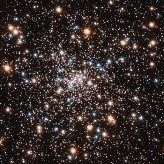Discovery of a stellar graveyard

 Credits : Nasa/Hubble
Credits : Nasa/Hubble
Globular clusters are extremely dense stellar systems in which the stars are very close together. Eduardo Vitral (X2015) and Gary Mamon (Institut d'Astrophysique de Paris) were interested in the cluster NGC 6397 in the Altar constellation, one of the closest globular clusters to Earth, at 7800 light years, which is visible to the naked eye under good observation conditions.
Thinking that they would find an “intermediate-mass” black hole (IMBH) in its center, they analyzed the motions and positions of the stars in cluster NGC 6397 with data from the Hubble and Gaia space telescopes and then modeled the mass distribution in this cluster.
The researchers did find an invisible mass in the center, but their modeling revealed that this mass was not punctual as it should have been in the presence of a more massive black hole: the mass was instead extended over a scale of a few percent of the total cluster size.
With the theory of stellar evolution, they concluded that most of this mass could be composed of small black holes, formed very early at the end of life of very massive stars. This striking conclusion depends on the assumption that black holes typically don’t escape from the cluster.
This research was partially funded by an AMX doctoral grant from the École Polytechnique and their discovery was disseminated by NASA and ESA.
More information: on the ESA website, on the NASA site
 Support l'X
Support l'X